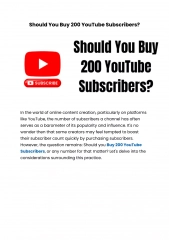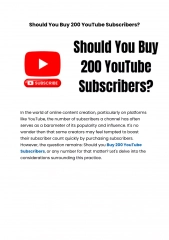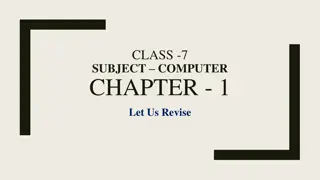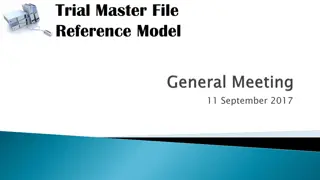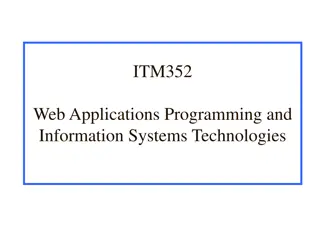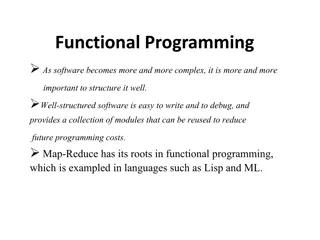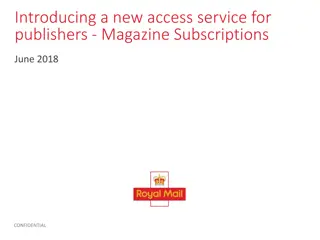System and Subscriber Programming Considerations for Tomorrow's Solutions
Explore the key definitions and considerations in system and subscriber programming presented by On Target Training and Consulting LLC. Dive into topics such as fleetmap considerations, console setups, encryption methods, and more to stay ahead with tomorrow's solutions in programming.
Download Presentation

Please find below an Image/Link to download the presentation.
The content on the website is provided AS IS for your information and personal use only. It may not be sold, licensed, or shared on other websites without obtaining consent from the author.If you encounter any issues during the download, it is possible that the publisher has removed the file from their server.
You are allowed to download the files provided on this website for personal or commercial use, subject to the condition that they are used lawfully. All files are the property of their respective owners.
The content on the website is provided AS IS for your information and personal use only. It may not be sold, licensed, or shared on other websites without obtaining consent from the author.
E N D
Presentation Transcript
Basic System and Subscriber Programming Considerations Developed and presented by On Target Training and Consulting LLC Contact us at 320-584-5416 Ontarget.tc@msn.com 1 Tomorrow's Solutions Today
System and Subscriber Programming Considerations Table of Contents: Definitions Fleetmap considerations System programming considerations Subscriber programming considerations Console considerations 2 Tomorrow's Solutions Today
System and Subscriber Programming Considerations Before we begin, lets look at the definitions: Remember that most definitions and acronyms can be found on the ARMER website. ARMER Listed are those I recommend you should become most familiar with: Alias Emergency Alarm Master Site Roaming Subscriber ARMER Emergency Call Multi-group Simulcast Template CALL Alert Encryption ADP/DES OFB/AES Site Talkgroup Multi-site CPS Fail-soft Private Call Site Trunking Wide Ttrunking Code Plug Fleet map PTT System ID Zone Dynamic Regroup ISR/ASR Repeater System manager 3 Tomorrow's Solutions Today
System and Subscriber Programming Considerations Definitions Alias ARMER Call Alert CPS Code Plug Dynamic Regroup Emergency Alarm Emergency Call 4 Tomorrow's Solutions Today
System and Subscriber Programming Considerations Definitions cont. Encryption ADP/ DES OFB/ AES Fail-soft Fleetmap ISR/ASR (Multicast) Master site Multi group Multi-site 5 Tomorrow's Solutions Today
System and Subscriber Programming Considerations Definitions cont. Private Call PTT Repeater Roaming Simulcast Site Site Trunking 6 Tomorrow's Solutions Today
System and Subscriber Programming Considerations Definitions cont. System ID System Manager Subscriber Template Talkgroup Wide Trunking Zone 7 Tomorrow's Solutions Today
Fleet Mapping Basics Understand the basic codeplug building process Understand preparation steps required to develop a codeplug Understand available tools Know where information resides to assist with building of the codeplug 8 Tomorrow's Solutions Today
Fleet Mapping Basics Why is a Fleetmap Important? Allows customized choices Provides unique insight on trunking system operations Encourages interoperability planning among local, regional, and state users Gain intricate knowledge of how P25 products work 9 Tomorrow's Solutions Today
Fleet Mapping Basics Information requirements System Key (s) containing Trunked System ID numbers Trunked Control Channel Frequency List ARMER Trunked System ID = 740F ARMER WACN ID = BEE07 Conventional Frequencies with Alias list Talkgroup/Announcement Group list with names and ID numbers List of Radio ID numbers cross-referenced to radio names (alias ) Talkgroup fail-soft frequency plan 10 Tomorrow's Solutions Today
Fleetmap Development Technical Skills Understand P25 trunked system operational modes Wide Area Simulcast and ASR roaming Site trunking Fail-soft Knowledge of subscriber features Understand subtle differences between portable and mobile subscribers Tomorrow's Solutions Today 11
Fleetmap Developer Technical Skills Knowledge of Motorola console products MCC 7500 Gold Elite User Configuration Management (UCM) development rules Microsoft Excel or Access knowledge Knowledge of Customer Programming Software (CPS) Tomorrow's Solutions Today 12
Fleetmap Process Phases Ongoing User Consultation Subscriber & Console Template Build Preparatory Documentation Fleet CPS Mass Education Codeplug Test Programming We should review the ARMER Standards, specifically SECTION 2 13 Tomorrow's Solutions Today
Fleetmap Process Phases Subscriber & Console Template Build Preparatory Documentation Customer Education Ongoing Consultation CPS Codeplug Test Mass Programming Subscriber Template forms TG Records form Prepare milestones Download seed code plugs from subscribers Secure System Key(s) Tomorrow's Solutions Today 14
System Key What is it? Computer file containing the customer s trunked system ID number OR Advanced System Key (ASK) 15
Fleetmap Process Phases Subscriber & Console Template Build Preparatory Documentation Fleet Ongoing Consultation CPS Codeplug Test Mass Education Programming Trunking system modes TG operations Subscriber features and operations Console features Fleetmap data forms introduction 16 Tomorrow's Solutions Today
Fleetmap Process Phases Subscriber & Console Template Build Preparatory Documentation Customer Education Ongoing Consultation CPS Codeplug Test Mass Programming Continue technical assistance to fleet Compile templates UCM record development for System Manager Enter TG & Subscriber information into UCM 17 Tomorrow's Solutions Today
Fleetmap Process Phases Subscriber & Console Template Build Preparatory Documentation Customer Education Ongoing Consultation CPS Codeplug Test Mass Programming Critique/correct Excel templates Create trunk system information in seed code plugs Create Master agency code plugs Codeplug build review 18 Tomorrow's Solutions Today
Fleetmap Process Phases Subscriber & Console Template Build Preparatory Documentation Customer Education Ongoing Consultation CPS Codeplug Test Mass Programming Codeplug tests on live system Final codeplug corrections made Create all required code plugs from Masters 19 Tomorrow's Solutions Today
Fleetmap Process Phases Subscriber & Console Template Build Preparatory Documentation Customer Education Ongoing Consultation CPS Codeplug Test Mass Programming Transfer subscriber data forms to contractor Transfer code plugs to contractor Begin codeplug deployment Inventory Control 20 Tomorrow's Solutions Today
Some Elements of a Fleetmap Multigroup and talkgroup Syntax Multigroup and talkgroup ID s (Hex Code) Simplex resources (SOA s) Permissions Console considerations Encryption Security Management 21 Tomorrow's Solutions Today
System Level Features That Drive Fleet maps Talkgroup / Multigroup Profiles Secure assignment Priority levels (2-10) Site Access authorizations Emergency Validation Priority Monitor All or Fast Start mode Regroupable 22 Tomorrow's Solutions Today
Fleet Mapping Basics Information Sources System Keys MNDOT OEC Conventional Frequencies with Aliases list System Owners / MNDOT OEC / ARMER Talkgroup/Announcement list with names and ID numbers MNDOT OEC Talkgroup Fail-soft Frequency Plan System Owners / MNDOT OEC Radio Specific Programming Layout Custom programming specifics per user group 23 Tomorrow's Solutions Today
Subscriber Level Features That Drive Fleet maps Emergency Alert/Call Dynamic regrouping Telephone interconnect Secure operations (encryption) Trunked scan operations Multigroup (MG) assignments Radio Wide configuration 24 Tomorrow's Solutions Today
MCC 7500 Console Level Features That Drive Fleet maps Emergency Call processing TG/MG Assignment Plan MultiSelect Plan TG Patch Plan Console takeover priority (explain) Operator level programming options Alert tones Paging Channel marker Tomorrow's Solutions Today 25
Additional Fleet Map Considerations Agency Group Definition One code per Agency Assigned by MNDOT (2-character code) Ideal for recordkeeping and reports tracking Useful to reduce time doing record searches No limit on quantity Tomorrow's Solutions Today 26
Trunking System Simplified Block Diagram 27 Tomorrow's Solutions Today
Trunking System Modes: Wide Wide area Roaming capable (if allowed) Statewide access Multi-zone Multi-site Full system functionality 28 Tomorrow's Solutions Today
Trunking System Modes Site Trunking Site Trunking (Failure mode #1) Zone isolated Multi-zone not capable multi-site not accessible Subscribers are still trunking No direct contact with dispatch consoles 29 Tomorrow's Solutions Today
Trunking System Modes: Fail-soft Fail-soft (Failure mode #2) Zone isolated Multi-zone not capable Multi-site not accessible Revert to shared repeater system Fail-soft operation at console level Subscriber fail-soft programming options Roam, lock on repeater or roam (leave site) 30 Tomorrow's Solutions Today
Multigroup Definition Members of disparate work groups are temporarily rerouted to a Supergroup via the trunking infrastructure allowing receiving users to hear priority voice messages from one initiating caller or dispatcher Radios and consoles capable of monitoring/ initiating multiple MGs Rule 1 Each MG can support up to 255 TGs Rule 2 A MG and associated TGs must be mapped within the same zone Tomorrow's Solutions Today 31
Multigroup Planning Planning Rules 15 Talkgroups max. supported per MG A Talkgroup can only be associated with one MG Secure vs. Clear (if applicable) Wait vs. Interrupt mode Console assignments Define which TGs assigned to each MG Tomorrow's Solutions Today 32
Talkgroup Considerations Utilization Naming convention Interoperability Layouts in subscribers Personality/characteristics Tomorrow's Solutions Today 33
Initial Talkgroup Considerations Utilization What do we need it for? Consider true interoperability Consider multi-discipline utilization Shared pools Tomorrow's Solutions Today 34
Initial Talkgroup Considerations Naming Convention What is it s purpose LAW FIRE Public Works Emergency Management Multi-discipline interop Consider keeping the name simple Consider character limitations Tomorrow's Solutions Today 35
Initial Talkgroup Considerations Interoperability Who, what where when why how CM Region examples Fire example of primary service area District 3 Sheriff s agreement on resources in their county Grant County anticipated Zone and talkgroup layouts Tomorrow's Solutions Today 36
Initial Talkgroup Considerations Layouts in subscribers What zone/personality assignment, why? Is there a way to affiliate talk groups by zone? F=Fire, IC= Incident Command (all-branch), etc CM is CM County level Dodge 2 or DD 2 Can or should we consider each others zones? Winona Houston etc For All disciplines? Grant County anticipated Zone and talkgroup layouts Tomorrow's Solutions Today 37
Additional Talkgroup Planning 100-200 assigned per agency (MNDOT) Secure, clear, or both (if applicable) Emergency Handling Call Alert/Private Call/Telephone Interconnect Encourage dialogue on interoperability Between internal agencies Between internal/external agencies TG affiliation roaming between sites Rule A TG can be assigned to only one MG Tomorrow's Solutions Today 38
TG/MG Records Development Some things you Probably want to track by talkgroup: ID number Talkgroup alias Allowed permission of use Talkgroup profile Capabilities and characteristics Fast start or all start In the Console? Logged? Site Access Regroupable Encryption Tomorrow's Solutions Today 39
Subscriber Considerations Trunked Personality Channel assignments (talkgroup layouts) Alias list Scan Functions Selections and lists Fixed or selectable Site preference Menu and switch assignments Multigroup Emergency Button Alarm, CALL, hot mic, tactical or revert 40 Tomorrow's Solutions Today
Subscriber Considerations Site preference by personality Can be by talkgroup Always Preferred Least None The Site preference selections above effect performance of your radio s, including in Site trunking and Fail-soft . A description of each setting is: 41 Tomorrow's Solutions Today
Subscriber Features Trunked Personality Site Preferences Always Will stay on this site in site trunking Use this site as long as it is above the acceptable threshold Radio will use this site unless the site drops to poor. Preferred Use this site as long as it is above the acceptable threshold Radio will use this site unless the site drops to poor. Radio will leave this site if the site drops to site trunking 42 Tomorrow's Solutions Today
Subscriber Features Trunked Personality Site Preferences Least Use this site as long as it is above the acceptable threshold Don t use this site unless there are no other options Radio will only use this site if all other available sites are in the poor region or failed. No preference Recommended value for optimal system performance in all areas of system Radio will operate on site if it is acceptable and no other sites are always preferred or preferred. Treat all sites the same Default value 43 Tomorrow's Solutions Today
Subscriber Considerations Site trunking Fail-soft Encryption Secure (strapped), Clear, Both Surveillance Mode Tones Call List Call Alert Private Call Announcement Dynamic regroup 44 Tomorrow's Solutions Today
Alias Consistency Planning Be aware of device character limitations differences Motorola XTS5000/2500 portable 12 characters XTS1500 Model 1.5 portable 8 characters MCC 7500 Console 14 characters You MUST understand importance 45 Tomorrow's Solutions Today
Subscriber Features Trunked Personality There are 4 RSSI thresholds. Excellent Default range is 89 to -93 dBm Very Good Default range is 93 to 97 dBm Good Default range is 97 to 101 dBm Acceptable Default range is 101 to 105 dBm Poor Default range is -105 dBm or below Radios need a 2 step RSSI level difference to consider switching sites 46 Tomorrow's Solutions Today
Subscriber Features Scan Functions Trunked and Conventional Scan Decisions Maximum number of members varies by subscriber Priority Monitor, TG, and Conventional Scan modes Define Priority mode - Fixed, Selected Channel, or Operator Select 47 Tomorrow's Solutions Today
Subscriber Features Scan Functions Trunked and Conventional Scan Decisions Define Non-Priority members Voice Transmit Talk mode Selected Channel or Talkback Only one scan list assignable per trunked personality 48 Tomorrow's Solutions Today
Subscriber Features Radio Wide Options Alert tones Home mode Emergency Keep Alive Time and Date format Time Out Timer value Out of Range indicators Noise suppression Tomorrow's Solutions Today 49
Subscriber Features Buttons and Switches Controls (Buttons and Switches Decisions) Mechanical rotary switches Mechanical rocker A-B-C switch Three side buttons Tomorrow's Solutions Today 50


